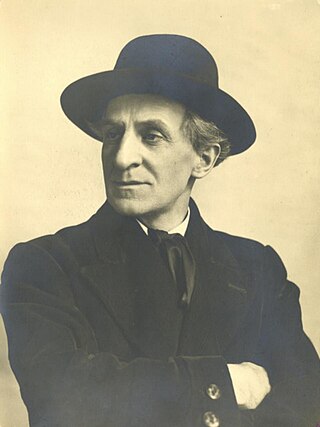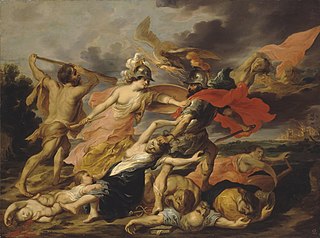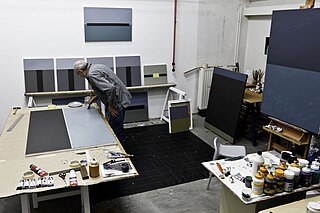
Mechelen is a city and municipality in the province of Antwerp in the Flemish Region of Belgium. The municipality comprises the city of Mechelen proper, some quarters at its outskirts, the hamlets of Nekkerspoel (adjacent) and Battel, as well as the villages of Walem, Heffen, Leest, Hombeek, and Muizen. The river Dyle (Dijle) flows through the city, hence it is often referred to as the Dijlestad.

Boom is a Belgian town, located in both the arrondissement and province of Antwerp. In 2021, Boom had a total population of 18,799. The total area is 7.37 km2. Residents are known as "Boomenaren".

Philip Fruytiers (1610–1666) was a Flemish Baroque painter and engraver. Until the 1960s, he was especially known for his miniature portraits in watercolor and gouache. Since then, several large canvases signed with the monogram PHF have been ascribed to him. These new findings have led to a renewed appreciation for his contribution to the Antwerp Baroque.

Alfred Ost was a Belgian designer, watercolorist, illustrator, painter, draftsman and political cartoonist. After his first drawings, of a descriptive realism of animals and genre scenes, he addressed religious themes transposed into a contemporary popular context. He became known as an animal painter and poster designer. His war experiences, intensified by his bipolar disorder, caused a dark colorite and pessimistic themes to be introduced into his art works. During World War I he lived in Amsterdam, where he was influenced by new avant-garde movements. He developed a personal style, first informed by his social engagement, and later by mystical themes.

Gillis Mostaert the Elder was a Flemish Renaissance painter and draughtsman active in Antwerp in the second half of the 16th century. He was a versatile artist who worked in various genres including landscape, genre and history painting. Gillis Mostaert was known in particular for his winter landscapes and his scenes with fires and nocturnal scenes and his works in this genre were among the most sought after pieces of his time. The artist operated a large workshop in Antwerp, which supplied works to prominent patrons. He was a regular collaborator with leading Antwerp artists of his time.
The Royal Academy of Fine Arts of Ghent is an art school that is one of the oldest art schools in Belgium. It is a part of the Hogeschool Gent, a Belgium University college.

Gilliam van der Gouwen, first name also transcribed as Guilliam and Willem was a Flemish engraver who spent most of his active career in the Dutch Republic. He is known for his reproductive engravings and various title pages, maps and book illustrations for the Amsterdam publishers.

Joseph Henri François Van Lerius was a Belgian painter in the Romantic-Historical style.

Victor Wolfvoet (II) or Victor Wolfvoet the Younger (1612 – 1652), was a Flemish art dealer and painter of history and allegorical paintings. His artistic output was heavily influenced by Peter Paul Rubens.

Frederik Bouttats the Elder or Frederik Bouttats (I) (Antwerp, 1590 – Antwerp, 1661) was a Flemish painter, engraver, printmaker and dealer in prints. He is known for his reproductive prints after famous painters and portraits. He was also involved in the production and sales of devotional prints. There is some confusion about the attribution of works to various artists called Frederik Bouttats. To him have been attributed some landscapes with the garden of Eden in the style of Jan Brueghel the Elder.
Jacomijne Costers was a nun and author whose vision of the afterlife, shown during a near-death experience, was written down in Visioen en exempel.

Luc Piron is a Belgian artist. He is a painter and printmaker. He is also a photographer and experiments with the possibilities of computer art.

Johan Decavele is a Belgian historian and archivist who worked as head of the Culture Department of the City of Ghent. He has mainly published on the history of Ghent and of the Reformation. He contributed to the Algemene Geschiedenis der Nederlanden, Dictionnaire d'histoire et de géographie ecclésiastiques, Monasticon belge, The Golden Delta of the Low Countries and The Oxford Encyclopedia of the Reformation.
Marthe Crick-Kuntziger (1891–1963) was a Belgian museum curator at the Royal Museums of Art and History, where she specialized in tapestries and was the author of a hundred publications in her field. She was awarded the five-yearly Edmond Marchal Prize of the Royal Academy of Science, Letters and Fine Arts of Belgium for 1933–1937.

Jan Frans Boeckstuyns, Boekstuijns or Boecxstuyns was a Flemish sculptor and architect who spent most of his active career in his native city Mechelen. He was also active as a manufacturer of gilded leather. While he mainly created church furniture and decorations, he also produced a number of small-scale works, including crucifixes and terracotta figures. He further designed architectural elements of buildings. His works show a transition from the high Baroque towards a more realistic and decorative style closer to the Rococo.
Kerstiaen Lambrechts was a Flemish painter. He was active in Antwerp between 1639 and 1658. He died in Antwerp on 18 September 1659.

Maarten Peeters or Marten Peeters van Ghelle was a Flemish painter, print publisher and dealer active in Antwerp.
Jan van Lokeren was a Flemish sculptor and woodcarver mostly active in Mechelen.

Karel Aubroeck was a Flemish expressionist sculptor and painter. He is best known for his monumental sculptures such as the equestrian statue of King Albert I in Nieuwpoort and the sculpture group of the Van Raemdonck brothers on the Yser Towers in Diksmuide.

The Oratorian College in Mechelen was a Latin school that was run in the city of Mechelen by the Congregation of the Oratory from 1630 to 1796. Originally founded in the Middle Ages by a collegiate church, management was transferred to the civic magistracy in 1450 and to the Oratorians in 1630. The school was closed down by occupying French revolutionary forces in 1796. The 18th-century building of the Oratorian College is preserved as a listed monument.


















